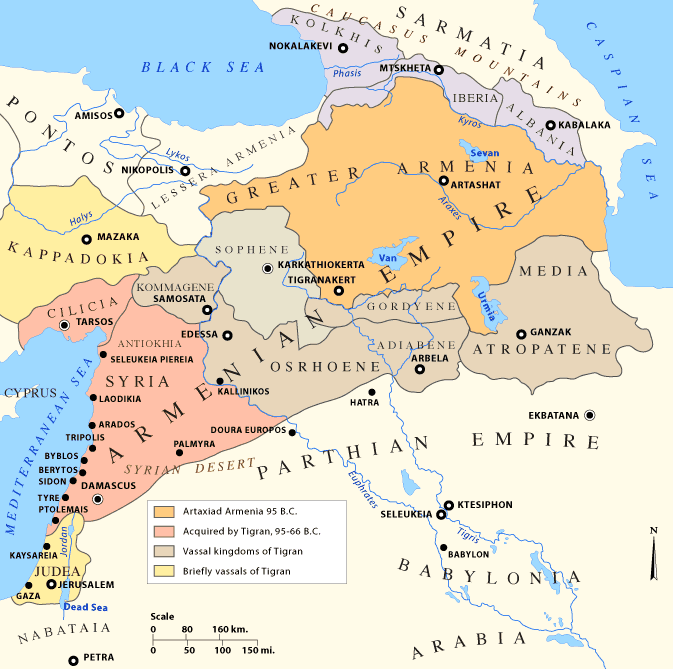Fact No. 11.
The Armenian kingdom formed in the 6th century BC lasted until the fall of Greater Armenia in 428 AD.
The earliest archaeological record of the name “Armenia” comes from the 6th century BC. The Urartian kings, who ruled the region from the 9th century BC on, clashed often with other peoples of the area, most notably the Assyrians and Medians, and, later, the Parthians. Although a lot of the sources of the history of that era remain limited for us today, an Armenian kingdom is recorded starting from around 585 BC, asserting its independence after the invasions by Alexander the Great around 330 BC weakened regional powers.
The Kingdom of Armenia was also referred to as Greater Armenia – by the Romans, for example – in order to distinguish it from other Armenian-populated territories, often known as Lesser Armenia. In Armenian, they are known classicaly as “Mets Hayk” (or “Medz Hayk”, using modern Western Armenian pronunciation) and “Pokr Hayk” respectively.
Three dynasties ruled Greater Armenia in succession, each named after its founder: the Yervandouni (known as Orontid by its Greek or Roman designation), Artashisyan (Artaxiad), and Arshakouni (Arsaciad), the last of which relinquished the crown in 428 AD.
During those thousand years or so, even while being caught between various powers and empires, a foundation for a national culture was built. Although very little of the architecture, art, literature, music, and religion from that era is immediately available today, it was near the end of this time period that Armenian Christianity was established, as well as the Armenian alphabet – two cornerstones of the Armenian identity that have carried on to modern times.
It was also during the 1st century BC that the most renowned Armenian king, Tigran the Great (Tigranes), ruled an empire that stretched from the Caspian to the Black to the Mediterranean seas, overshadowing Rome and Parthia in the Near East for a couple of decades. The name Tigran (or Dikran, in its Western Armenian pronunciation) is still a common male name among Armenians today – as are Yervand (Yervant), Artashes (Ardashes), and Arshak (Arshag), echoing the names of past rulers and dynasties of Greater Armenia.
References and Other Resources
1. Simon Payaslian. The History of Armenia. Palgrave Macmillan, 2007, pp. 4-40
2. Wikipedia: “Kingdom of Armenia (antiquity)”
Image Caption
A map of the region, indicating Greater Armenia during the rule of Tigran the Great from 95 to 55 BC, and the extent of his domains up to 66 BC.
Attribution and Source
Robert H. Hewsen. Armenia: A Historical Atlas. The University of Chicago Press, 2001, p. 34
By www.armenica.org Uploaded to en.wikipedia by en:user:Nareklm [GFDL or CC-BY-SA-3.0], via Wikimedia Commons
Follow us on
Recent Facts
Fact No. 100
…and the Armenian people continue to remember and to...
Fact No. 99
…as minorities in Turkey are often limited in their expression…
Fact No. 98
Armenians continue to live in Turkey…
Fact No. 97
The world’s longest aerial tramway opened in Armenia in 2010

